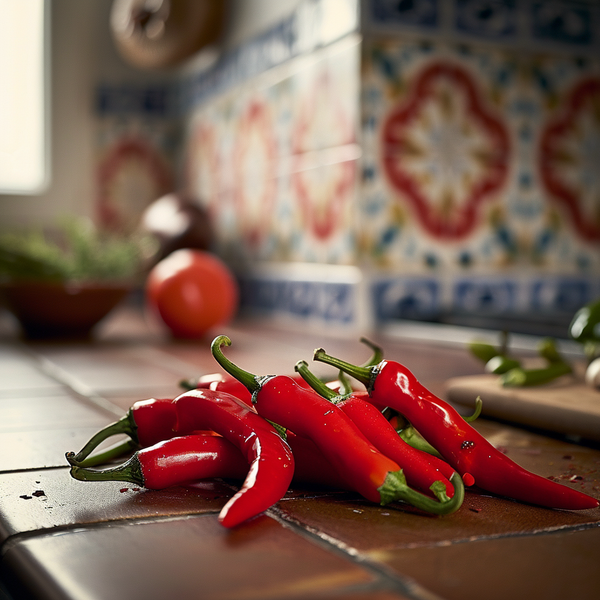
Chili
Chili, encompassing a wide variety of peppers from mild to extremely hot, is a staple ingredient in cuisines around the world, celebrated for its ability to add heat, depth, and complexity to dishes. Here's how chili is commonly used in cooking:
Fresh Chilies:
Fresh chilies are used in salsas, sauces, and as a spicy garnish for dishes. They can be minced and added to recipes to provide a burst of heat and flavor. Fresh chilies are also used in marinades and to infuse oils.
Dried Chilies:
Dried chilies are used whole, crushed, or ground into powders. They're a key ingredient in spice blends, rubs, and as a base for sauces and stews. Dried chilies offer a different flavor profile than fresh ones, often with a deeper, more complex taste.
Chili Powders and Flakes:
Ground chili powder and chili flakes are convenient ways to add heat to a dish. They're used in everything from seasoning mixes to being sprinkled directly on food for added spice.
Cooking Oils:
Chili-infused oils are made by steeping dried or fresh chilies in hot oil. These flavorful oils are used as a condiment or for cooking, adding a spicy kick to dishes.
Sauces and Pastes:
Chilies form the base of many hot sauces and pastes, such as sambal, harissa, and various chili sauces used in Asian cuisine. These condiments can be added to recipes or served alongside meals to enhance flavor.
Curries and Stews:
Chilies are integral to the flavor profiles of curries and stews, providing heat and depth. They can be used whole, sliced, or as a paste, depending on the recipe.
Pickling:
Fresh chilies are often pickled in vinegar along with other spices, creating a tangy, spicy condiment that can be used to add flavor to a variety of dishes.
Marinades:
Chilies, both fresh and dried, are used in marinades to season meat, fish, and vegetables, imparting heat and enhancing the overall flavor of the food.
Soups:
Fresh, dried, or powdered chilies can be added to soups to introduce warmth and complexity. They're particularly common in brothy soups where their flavor can infuse the liquid.
Beverages:
Chilies can be used in small amounts to add a surprising kick to beverages, including cocktails, hot chocolate, and even some teas.
When cooking with chili, it's important to consider the heat level, which can vary significantly among different types of chilies. Capsaicin is the compound responsible for the spicy heat in chilies, and it's more concentrated in the seeds and inner membranes. Removing these parts can reduce the heat if desired. Always start with a small amount and adjust according to taste, as the spiciness can intensify during cooking. Whether seeking to add a gentle warmth or a fiery kick to dishes, chili peppers offer a versatile range of flavors to explore in cooking.
Nutritional Information
calories
101
carbohydrates
7.75 g
fats
5.59 g
protein
5.3 g